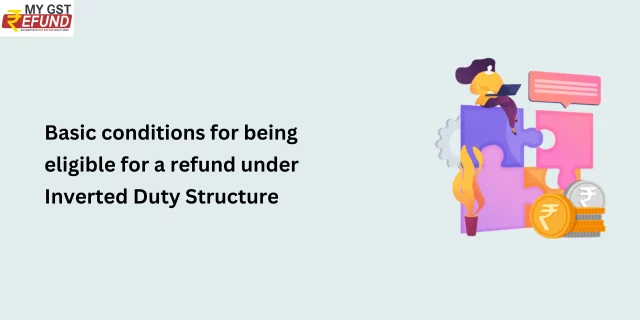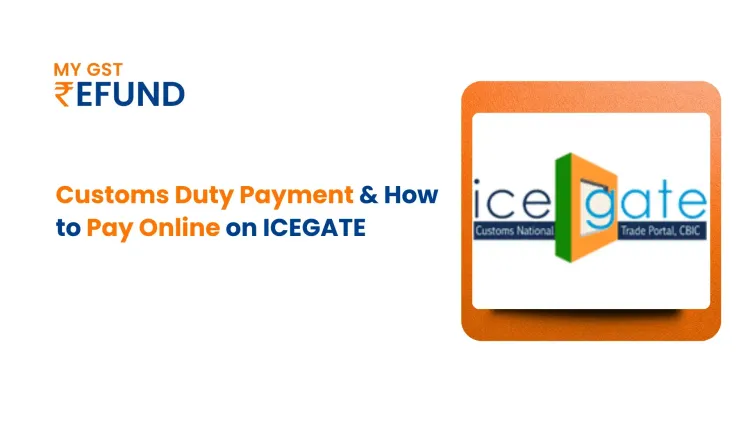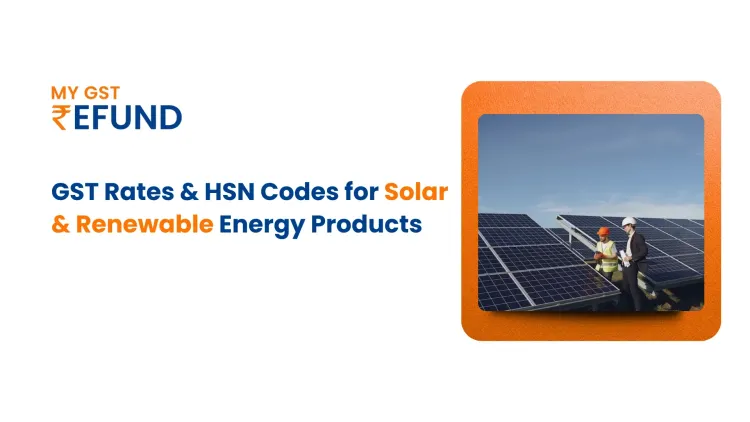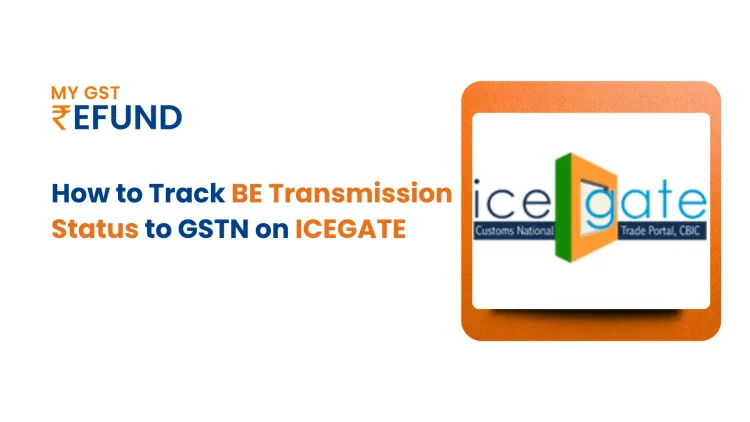GST Refunds Under Inverted Duty Structure – MyGST Refund
Published on: Thu Aug 24 2023
Introduction

The situation of Inverted Duty Structure (hereinafter referred to as “IDS”) arises when the supplier has purchased the goods at a higher rate of tax and sells the final product at a lower rate of tax. In other words, Inverted Duty Structure is a situation where the tax on inward supply is more than the tax on outward supply.
For Example a dress sold at a 5% tax rate, with raw materials like non-woven fabric, thread, buttons, lace, and zippers purchased at a 12% tax rate.
Provisions related to GST refund under Inverted Duty Structure
Section 54 (3) (ii) of the CGST Act, 2017, read with Rule 89 (5) of the CGST Rules, 2017, provides for a refund of accrued input tax credit on account of the inverted duty structure.
The CBIC issued Circular 125/44/2019 dated 18th November 2019 (hereinafter referred to as ‘Refund Circular’) that clarified various aspects of GST refunds such as refunds under inverted duty structure, refunds on the account of exports, the requirement to mention HSN / SAC, changes in the manner of claiming of refund of IGST on supplies other than zero-rated supplies, and so on.
Basic conditions for being eligible for a refund under IDS

- The rate of tax on input is higher than the rate of tax on output supplies.
- The output supplies are not exempt or nil-rated supplies.
- Refund on such supplies is not specifically restricted by the Government
Also Read: Risky Exporters: Identification, Risks, and Refund Solutions
Cases where a refund under Inverted Duty Structure is eligible
Below mentioned are some situations where there can be accumulations of credit on account of an Inverted Duty Structure:
- Traders purchase goods such as LPG gas at the rate of 18% and sell the same at 5% to domestic customers.
- Supply of IT products by a Company to Government Departments, PSUs, and to other Research and Educational Institutes. In these cases, 18% GST is levied at the time of procurement from distributors or manufacturers. When such goods are supplied to aforesaid institutions 5% tax rate is levied. However, the same goods, when supplied to other users attract an 18% tax rate.
- A composite supply wherein the output is at a lower rate than the input/input services which becomes the part of such composite supply.
- Goods exported on payment of IGST under the claim of rebate, wherein the IGST rate is lower than the GST rate applicable to the goods/services forming part of such exported supply.
- Where a supply has been made to merchant exporters by the manufacturer then the manufacturer can claim the refund on the account of IDS under Notification 40/2017- Central Tax (Rate) dated 23.10.2017 or Notification No. 41/2017-Integrated Tax (Rate) dated 23.10.2017 or both.
Cases where a refund under Inverted Duty Structure is not eligible
The following situations, in which it is not possible to apply for a refund of an unused input tax credit:
- If Indian goods are subject to export duties.
- If the supplier requests a refund of IGST paid under the IGST Act.
- If the supplier receives duty or IGST relief on such supplies.
- Output supplies that are zero-rated or wholly exempted under the GST laws.
Also Read: How the GST Refund Policy Works in India?
Procedure for claiming the refunds
The GST refund process for Inverted Duty Structure follows the provisions specified in Section 54 of the CGST Act, 2017, read in conjunction with Rule 89 of the CGST Rules, 2017. The registered person claiming a refund under Inverted Duty Structure must comply with the prescribed procedures, file the necessary documents, and provide supporting evidence to claim refunds on account of exports without payment of GST. The refund application undergoes a verification process by the GST authorities to ascertain eligibility and authenticity. Upon successful verification, the approved refund amount is directly credited to the Merchant Exporter’s registered bank account.
- Formula for claiming GST refunds under Inverted Duty Structure
- Where there is an Inverted Duty Structure, i.e the rate of tax on inward supplies is more than the outward supplies (Rule 89 Sub-rule 5 of CGST Rules, 2017):
Formula to calculate the refund amount:
| [Net ITC x (Turnover of inverted supply of goods and services/Adjusted total turnover)] – {tax payable on such inverted rated supply of goods and services x (Net ITC /ITC availed on inputs and input services)} |
Where,
- Net ITC: ITC availed on inputs used in the supply of Inverted rated goods and services during the relevant period.
- Turnover of inverted rated supply of goods: turnover for that supply of goods and services that falls under the Inverted rated category.
- Adjusted total turnover: Total turnover in a state/ Union Territory, turnover of zero-rated and non-zero-rated supply of services, excluding the value-exempt supplies for the relevant period.
- Output tax payable on the inverted rated supply of goods and services: Tax liability for the relevant period payable on the inverted rated supply for goods and services.
- List of documents required for filing the refund application under IDS (RFD-01):
- Tax invoices issued by the supplier.
- A signed letter of undertaking in case export is done under LUT terms.
- Receipt of payment made.
- Copy of the shipping bill issued by the Customs department.
- Copy of the Bill of Lading or the Airway bill.
- The Bank Reconciliation Certificate (BRC) or Foreign Inward Remittance Certificate (FIRC).
- Copy of GST returns (GSTR 3B) filed for the relevant periods.
- Copy of Form GSTR-2A of the relevant period for which the refund claim is filed.
- Any other document (if required).
FAQs
Q: What is the Inverted Duty Structure (IDS) under GST?
A: The Inverted Duty Structure (IDS) refers to a situation where the tax rate on the inward supply of goods or services is higher than the tax rate on the outward supply. This often leads to an accumulation of input tax credits, creating a need for refunds.
Q: Which section of the CGST Act governs the refund under IDS?
A: The refund provisions for IDS are specified in Section 54 (3) (ii) of the CGST Act, 2017, read in conjunction with Rule 89 (5) of the CGST Rules, 2017.
Q: How is the refund amount calculated under IDS?
A: The refund amount under IDS is calculated using a specific formula considering factors like net input tax credit, turnover of inverted rated supply of goods, adjusted total turnover, and output tax payable on inverted rated supply of goods and services.
Are you Looking for GST Refund Service? Mygstrefund.com offers GST refunds on business, exports, and many more if your GST application is rejected. Get in touch with us today.
Related Posts




